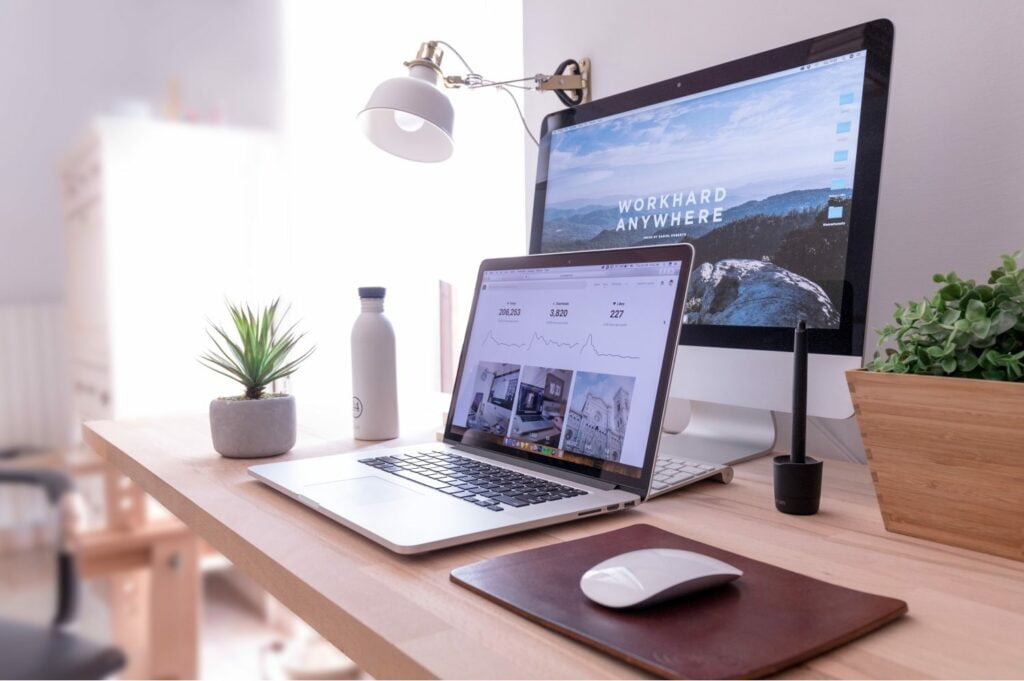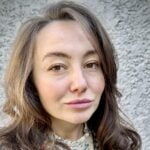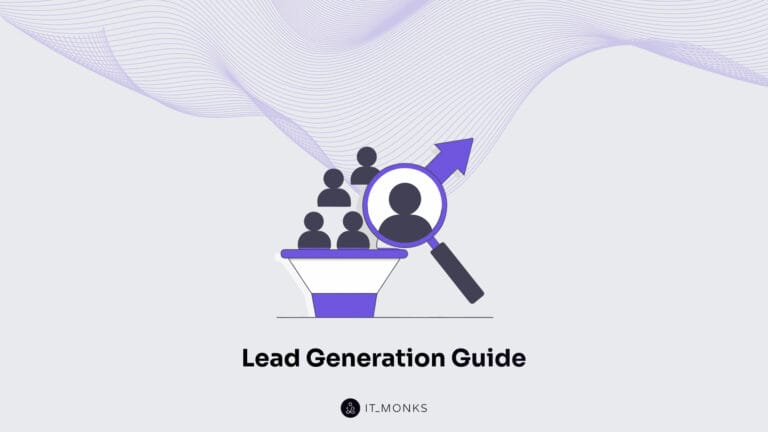How to Create User-Centered Design Process + Methods, Tools
Table of Contents

Whenever we work on any project, we create it for people. That’s why it’s important to understand who, how, and why will use it. This knowledge is fundamental for creating a product that people will love. Building a user-centered design is about understanding who will use the products and individuals’ main motivations for using them. It also means the design and functionality of the product are validated by the target audience at every step of the way. It’s fair to say that catering your design around your users is the only way to ensure your offer will be truly competitive in the market.
Relying purely on intuition and assumptions doesn’t guarantee the company would launch a functional product in the end. Having a strong set of design skills is vital, but it proves to be much more effective when not relying on those alone. Even if you do everything by the book regarding the web design fundamentals, you need to involve users in the design process. People know answers to your design questions. Thus, involving your target audience in the design process is the ultimate way to ensure that you provide them with the best design and ultimate user experience they might expect to get from you.
What is user-centered design?
The user-centered design puts users at the heart of the design process. Every element and process involved in building a user-centered design should focus on meeting the needs, objectives, and demands of the users it targets. The target audience is involved in every design process with the user-centered design.
The key to creating a truly user-centered design is that you continuously get feedback from your customers and iterate it on your designs accordingly. This way, you can ensure your product stays relevant to your audience’s demands.
To understand the differences between human-centric and user-centric designs, you need to have a deep knowledge of your target audience to create a winning user-centric design. You need to develop well-rounded user personas to establish your priorities. Different user segments have different needs, appreciations, and technical abilities.
Why does user-centered design matter?
The importance of user-centered designs emerges with the advancements in technology in different spheres of human life. The most innovative solutions can fail to reach mainstream adoption unless built with the user-centered design process in mind. The most popular devices like iPhones didn’t revolutionize the world simply because of their technology. What set them apart was that they were made with the customer in mind at every stage of their development. The latest innovations in technology can completely change consumers’ lives. Augmented Reality and blockchain technology wouldn’t have been so usable and understandable by everyone unless they represented a perfect match of technology and user-centered design.
User-centered design principles
There are four major principles that you should consider when implementing a user-centered design.
- To ensure your product meets users’ needs, people should be involved in the product’s life cycle from the start. Users and product designers often have different viewpoints about the same things. Some things that seem apparent for users are not so for product designers. That is why users should be involved in the design process from the start.
- It’s important to clearly understand the product requirements and your project’s problems. Product development teams should prioritize this phase of the user-centered design process, even if it takes more than half of the time devoted to the project development.
- The user feedback loop is one of the most critical steps featured in the product’s development journey. It includes user interviews and customer feedback that allow the team to make more user-friendly decisions and the corrections needed during the product’s life-cycle.
- User input should be included in every stage of the design process to mind the latest recommendations and set the right priorities. The product release cycles will be further on planned as per the priorities. The team iterates over the phases until they receive satisfactory feedback results and the product can be finally released in the market.
Methodology
Understanding the user is a fundamental part of building a user-centered design. Knowing users’ preferences, needs, and desires makes it simpler for the teams to determine what research methods should be used and how to employ them effectively. Let’s consider the main user-centered design methods that every user-centric designer should familiarize himself with.
Running Focus Groups
The method involves inviting a group of potential clients to share their thoughts and opinions about your product, a user path, and particular issues that your projects will be solving. The main characteristics of focus groups include:
- Feature mainly qualitative data;
- It is generally low cost, especially when done remotely;
- Small sample size;
- Requires an experienced moderator;
- A good way to get multiple perspectives at once.
Surveys
Well-designed surveys can help you obtain large amounts of statistical data regarding your target users’ specific challenges. Questionnaires and surveys are commonly brief and simple. The data obtained from surveys can be both qualitative and quantitative. This generally low-cost method allows you to source respondents from your user base.
Usability Testing
As part of this user-centered design method, people interact with the product directly while the moderator notes and records the feedback. The method is run in a live environment, but it can also be conducted using additional tools.
Card Sorting
This is a UX user-centered design method used to design and test the overall architecture of a website or application. The technique involves asking users to organize the content, pages, and topics into categories that make the most sense. By using this method, you can make the right decisions regarding the architecture of your website. Unlike other methods mentioned above, it’s a time-consuming user-centered design process approach.
These are the key user-centered design methods. Yet, no single research method is best suited to be used for this purpose. It’s important to choose the right method that appeals to your audience and perfectly matches your project.
How to create a user-centered design process
There is a wide range of user-centered design methods. The key is to know what to use for creating a good user-centered design process that will be helpful to your team and help you improve your project. By using the selected method and implementing the following steps, you can create the process that supports the user-centered design process across your team.
Research
Although it may be a lengthy and time-consuming process, the insights derived from the research will play a big role in developing a compelling user-centered design. Use a combination of research methods listed above to get a better idea about your users and how they interact with your project. Based on the knowledge and information you attain, you can proceed with developing user personas that should guide your product development process from the ideation to the deployment.
Creating user personas should be a huge help at the beginning of the design process. Your product can target multiple groups of users. However, it’s important to know the focus groups to which you will appeal and take into account the considerations of those users when you work on the features of your product and user flows.
Research is the fundamental stage of every user-centered design process. You need to start the design process with the user, not the product. By focusing on the users, you know what features you should prioritize and market them for maximum efficiency.
Define a clear scope for your designs
It’s important to work with other team members to establish clear boundaries for your project. By defining a clear scope for your designs, you can ensure the final results align well with user needs. With the correctly defined goals, you can create a win-win product for everyone involved.
Prototyping designs
After you finish doing the research and collecting the needed information, you can go ahead and start prototyping your user-centered designs. Start with a bare-bones wireframe and work from there. Validate your decisions at every step of your way. Create a user journey map that would help you visualize your users’ journey as they interact with your product.
After you create a draft of your design, start asking yourself the following relevant questions:
- Is your design accessible enough? You need to ensure that users can quickly and easily locate all the needed details as they browse your web page.
- Is it comprehensive enough? Users should easily understand what your design is about, what it aims and how to use it. The content should be readable enough, short, and sweet.
Listen to users’ feedback
Analyze the effectiveness of your prototype through extensive user testing and feedback. Watch how users interact with your content, whether your project solves their primary issues, what went well or wrong in the design process, etc. You can gather more insights by using the user-centered design methods that we have discussed above. Some things might not work as smoothly as you expect them to be from the first time. The user-centered design process requires time and patience, which will provide you with the best results in the end.
Iterate
Iterate as many times as it takes to reach the product that delights your users. If you discover there are elements in your design that require fixing or further improvement, you’d better build something that is better than the current version and keep iterating from there.
Do not be afraid to fail. Keep users at the forefront and you’ll have a well-polished user-centered design that keeps your project on track.
Tools
One of the ways to create user-centered designs is by using dedicated tools. There are many solutions available in the online community. Let’s consider the most popular ones.
- Hotjar is one of the best ways to visualize how users interact with your content. It provides you with heatmaps revealing the actual user behavior. Feedback forms and surveys provide you with an opportunity to establish better communication with the audience and get deeper insights into users’ needs.
- Reveall is a versatile platform that lets you put users at the center of your work. The user-centered design tool lets you automatically gather both quantitive and qualitative user data based on their feedback and research. The tool helps you visualize the findings through the stories and journeys that help you discover your customers’ needs.
- Figma is one more handy user-centered design tool that provides for better design collaboration, and prototyping. It’s the ultimate choice for team that need to brainstorm and develop their designs with the maximum comfort and efficiency. There are multiple built-in options intended to facilitate the collaboration, like sticky notes, diagrams, etc.
By implementing a user-centered design process, you can create an awesome product that would appeal to your target users and help you achieve the desired results for your project. By putting users in the spotlight, you demonstrate your motivations and intentions. The method reveals that meeting the deadlines is not the highest priority for you. Instead, by communicating with the audience you can prioritize their needs and better understand their expectations.
Contact
Don't like forms?
Shoot us an email at [email protected]




